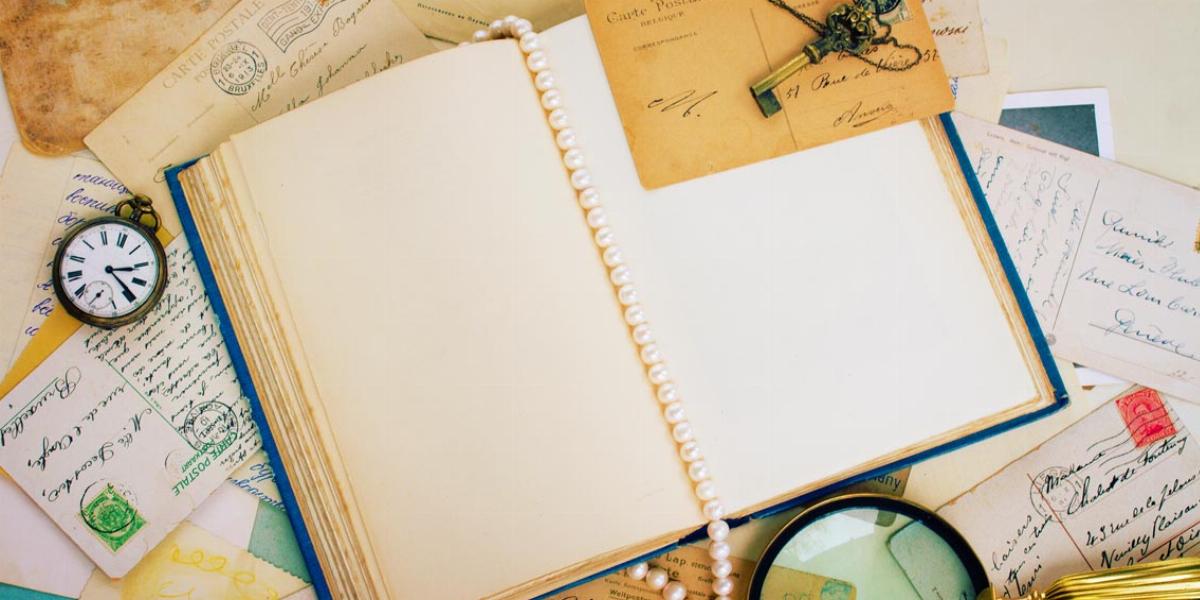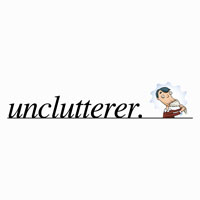
Decluttering sentimental items can be one of the most difficult organization tasks. We all attach feelings and memories to objects, but when closets, drawers and cabinets start to overflow with keepsakes, it’s easy to lose sight of the truly special ones among a growing sea of clutter.

“Keep in mind that the past is not the present. We have an incredible ability to remember only the good things. No matter what season you are in, there is joy to be found. Holding onto the past makes the present joy much more difficult to see and embrace.”
Rachel Jones | Nourishing Minimalism
By getting rid of those teacups you didn’t really want, you can truly enjoy the objects that bring out your best memories. Jacki Hollywood Brown from Unclutterer, Rachel Jones from Nourishing Minimalism and Melissa Russell from Simple Lionheart Life break the process down into simple steps for you to follow.
Sentimental items are anything that we attach emotion and meaning to. This is different for everyone. For some, it’s children’s artwork and school papers. For others, it’s a set of antique china that used to be displayed in their parents’ dining room.
What Do You Need Help With?
Pick a Decluttering Step
It’s hard to let go of items that we associate with loved ones or special places. But these steps can make dealing with sentimental clutter easier.
Before you start, it’s helpful to set a time limit for yourself to avoid being overwhelmed. Jones recommends keeping your decluttering sessions to under three hours to avoid burnout. “Treat this as an important appointment just like yo would make a dentist or doctor's appointment,” she said. “Don’t allow anything to take it’s place.” If you know you’ll get emotional while sorting, ask a family member or friend to help keep you on track.

“These are sentimental items. You’re likely going to experience some strong emotions when dealing with them. Don’t try to do too much at once.”
Jacki Hollywood Brown | Editor-in-Chief, Unclutterer.com
Just as important is to set clear goals, both for the whole project and individual decluttering sessions. Once you know what your end game is, you can set smaller goals that fit with your timeline for each cleaning session.
It’s also helpful to have close family members on hand in case they’d like to take something you no longer want.
Pro Tip: Don’t procrastinate! Melissa Russell explains that the best way is to just start. “The hardest part of a big project like decluttering is often getting started. Once you get going, it’s easier to keep going.”
Grab three boxes and label them: keep, donate and trash. As you sort, you should put the items into one of these boxes. If the items are larger, you can also use color-coordinated sticky notes to indicate what box those items are associated with.
Brown recommends asking yourself three questions when taking stock of your sentimental clutter.
If you answered no to more than one question, you should get rid of that thing. To avoid feeling guilt, Brown recommends remembering that “you’re not giving away the person, the love of that person, or that person’s love for you.”
Russell continues to say that if you can’t identify a clear reason for why you are keeping an item, that you don’t value it as much as you thought and it doesn’t need to be kept.

“If you find that you think you should keep something just to protect someone else from being sad or disappointed, acknowledge that it’s not your responsibility to control their emotions. Instead, focus on your own emotional health. It’s not healthy to have the statue and be irritated with Aunt Sarah every time you see it. So let it go.”
Rachel Jones | Nourishing Minimalism
If you’ve made it through the first round of sorting but your “keep” pile is still pretty full, take a second look. In most cases, you’ll find a few things you now feel comfortable donating.
If you’re still having trouble letting go of your emotional clutter, keep the memories forever by making them digital. “Sometimes taking a photo of sentimental items can be helpful,” Brown explains. “Knowing that, if you need to, you can see the items again can be the key to letting them go.”
Jones encourages asking the question “Does it help me live the life I want to live?” when decluttering sentimental items.

“If the item is holding you back, let it go. Don’t hold onto items because you want people to view you a certain way. Instead keep items that help you be the person you want to be in 5, 10 and 20 years.”
Rachel Jones | Nourishing Minimalism
With things sorted into various boxes, this step should be quite easy. Remember, though, that you should stick with your original decision to part with an item, even if you start having second thoughts.
For items in good condition, call your local thrift stores and donation locations before visiting to make sure they are currently accepting those pieces. As for the things you need to toss, the best option will depend on the amount of items and your timeframe. If you have larger items or are cleaning out an entire home, we recommend renting a roll off dumpster to handle the clutter quickly. Otherwise, you may need to wait until your next curbside bulk collection day to toss your items.
Now that you have free space and a handful of items that are especially meaningful to you, give them an equally special place within your home. Displaying a figurine on a shelf or framing a favorite piece of artwork will strengthen the connection and help ease some of the guilt that comes with decluttering.

“A great approach is to find ways to use or display sentimental items in your home. For example, I have a serving spoon that belonged to my great-grandma, then my grandma. I use it on a very regular basis, serving everything from Christmas dinner to mac & cheese. I love that I’m able to use and appreciate the spoon and its history often, instead of keeping it stored away somewhere and rarely seeing or using it.”
Melissa Russell | Simple Lionheart Life
Struggling with what to get rid of what what to keep? Follow these rules to help you get closure and make a decision on what to do with certain items:
While you’ve done the work of decluttering the sentimental keepsakes that you currently own, it’s easy to use the extra space to stockpile more stuff. If you’re tasked with cleaning out a loved one’s home, it can be taxing to declutter and clean all at once.
“It’s best not to make emotionally challenging decisions while grieving,” says Brown. “If the clutter is building up and must be cleared, consider packing it away and storing it for a few months (have a definite end date) then sorting through the items.”
Ready to tackle the other cluttered areas in your home? Read our tips on how to get rid of clutter and organize your home room by room.
Jacki Hollywood Brown is the former Editor-in-Chief of Unclutterer.com. Unclutter offers product reviews, DIY tips and ideas for your home presented by a variety of experts in the home improvement industry. They aim to provide the right guidance so you can create a space you can enjoy being in.
Author Rachel Jones helps clients transform their homes into peaceful spaces. Beginning in 2008 in Montana, Rachel began her own minimalism journey, then dedicated her work to helping others by sharing her methods and simplifying tools to easily maintain spaces.
Founder Melissa Russell of Alberta, Canada offers inspiration, encouragement and practical advice to simplify and declutter your home and embrace minimalism. Melissa has been decluttering for 10+ years.
